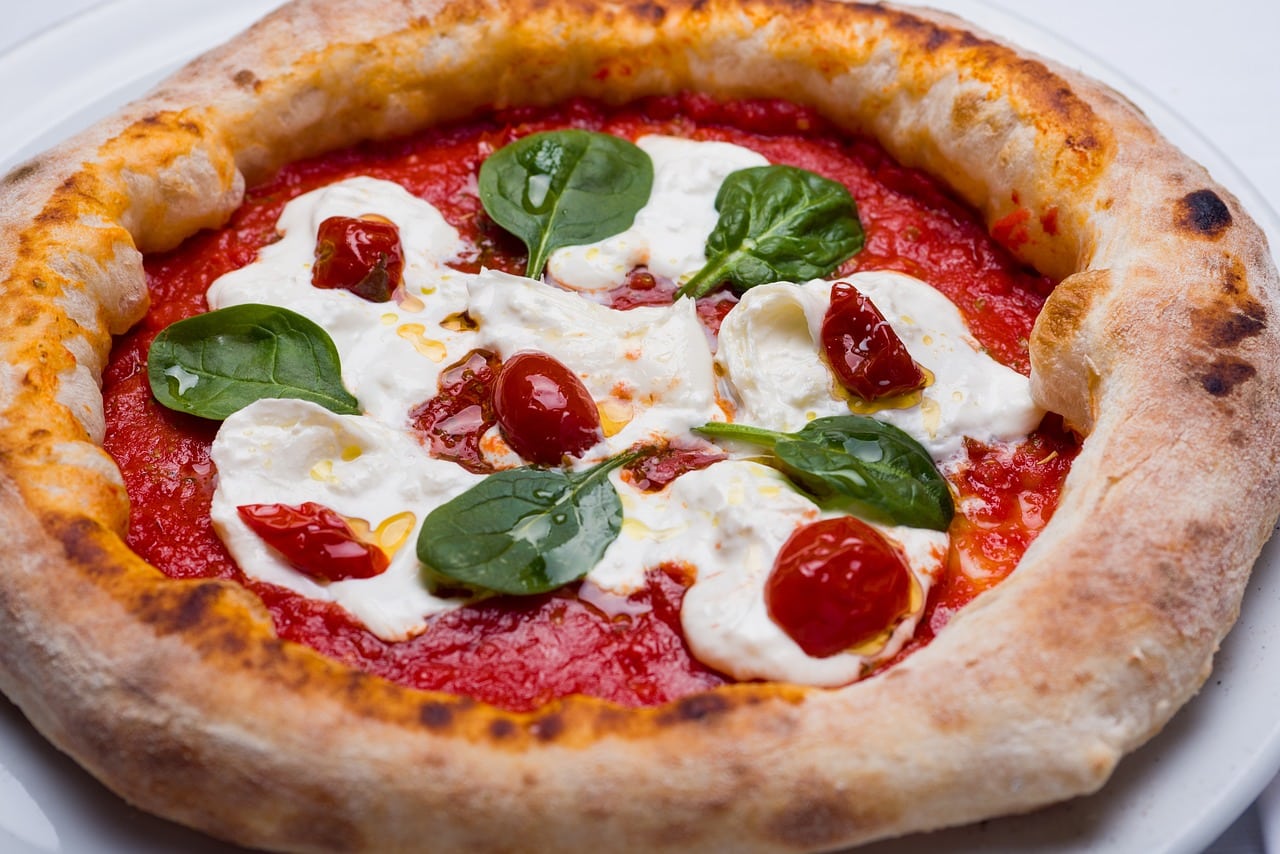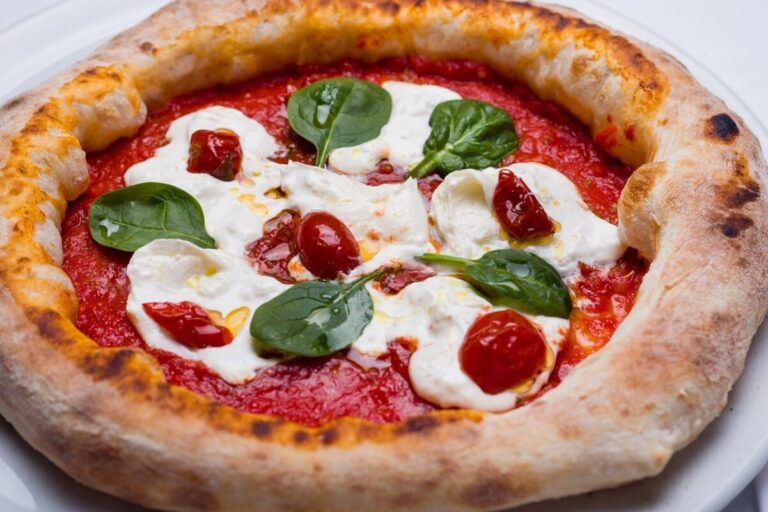 Pizza stands as one of Italy’s most iconic and cherished culinary creations. Its enduring popularity, rooted in its simple yet versatile nature, has captivated taste buds across the globe. But, have you ever wondered where it comes from and how it became so popular worldwide?
Pizza stands as one of Italy’s most iconic and cherished culinary creations. Its enduring popularity, rooted in its simple yet versatile nature, has captivated taste buds across the globe. But, have you ever wondered where it comes from and how it became so popular worldwide?
If you’re a food enthusiast, you can’t miss this guide that our Remitly team has put together as part of our series celebrating the culinary heritage of peoples from all over the world.
Naples: The Birthplace of Pizza
Naples, a vibrant city in southern Italy, is widely recognized as the birthplace of pizza. The roots of this timeless dish can be traced back to the 18th century, when early versions of the pizza we enjoy today were first crafted. During that time, pizza was crafted and peddled on the bustling streets.
However, the appeal of this modest meal saw a meteoric rise in popularity. It swiftly transitioned from being mere street food to an indispensable facet of Neapolitan culture. In the present day, Naples boasts its rich pizza heritage and remains dedicated to preserving the traditional art of pizza-making.
Variations of Pizza Across Italy
While Naples may indeed be the birthplace of pizza, its popularity sparked the proliferation of this dish throughout all of Italy. Nowadays, various regions across Italy have crafted their unique interpretations of pizza.
In Rome, you’ll encounter thin-crust pizzas, distinctively crispy compared to their Neapolitan counterparts. In the Liguria region, they savor the sardenaira, an ancient version predating the use of tomatoes on pizzas.
In this variant, anchovies take center stage, accompanied by olives and garlic, spread over an aged bread or flatbread base.
Each region’s distinctive variation mirrors local tastes and the ingredients readily available, rendering each one a unique and equally delectable creation.
From Italy to the World
Pizza’s journey from a local Neapolitan street food to a global sensation is captivating.
Pizza’s Spread:
– Brought to new lands by Italian immigrants in the late 19th and early 20th centuries.
– First pizzeria, Lombardi’s, opened in New York City in 1905. From there, it proliferated across America and then globally.
Local Adaptations:
– America gave birth to styles like New York thin crust and Chicago deep dish.
– Brazil introduced green peas as a topping, while Japan incorporated mayonnaise and squid.
Though some adaptations might be viewed as unconventional to traditionalists, they underscore pizza’s universal allure and flexibility. Still, the essence of traditional Italian pizza endures in all its forms.
Ingredients and Preparation of Traditional Italian Pizza
Traditional Italian pizza is renowned for its minimalistic approach to ingredients. It starts with a basic dough consisting of flour, yeast, salt, and water as the foundation.
The preparation entails manually stretching out the dough, preserving air bubbles for a delicate crust. Toppings are added, followed by baking in a wood-fired oven at high temperatures for a mere 60–90 seconds.
How to Make your Own Traditional Italian Pizza at Home
Making your own pizza might seem daunting, but with a little patience and practice, you can create a delicious slice of Italy in your own kitchen.
Here’s a simple recipe for traditional Margherita pizza.
Ingredients
For the Dough:
– 500g strong bread flour
– 1 tsp instant yeast
– 1 tsp salt
– 325ml warm water
For the Topping:
– 400g canned tomatoes or ripe fresh tomatoes
– 2 tbsp olive oil
– Salt to taste
– A handful of fresh basil leaves
– 200g mozzarella di bufala campana cheese, sliced
– Extra virgin olive oil for drizzling
Instructions
- Start by making the dough. Mix the flour, yeast, and salt in a large bowl. Gradually add warm water while stirring until it forms a sticky dough.
- Knead the dough on a floured surface for about ten minutes until smooth and elastic.
- Place the dough in a greased bowl, cover with a damp cloth, and let it rise for about two hours or until doubled in size.
- Preheat your oven to its highest setting and place a baking stone or heavy baking sheet inside to heat up.
- For the topping, blend tomatoes with olive oil and salt until smooth.
- Divide risen dough into four pieces and stretch each piece out by hand without using a rolling pin to maintain air bubbles.
- Spread tomato sauce over each base leaving a border around the edges, then scatter over slices of mozzarella followed by a few basil leaves.
- Carefully transfer pizzas onto a preheated stone or sheet in the oven and bake for about eight minutes, or until crust is golden brown and cheese is bubbling.
- Drizzle with extra virgin olive oil before serving.
Enjoy your Pizza Like an Italian
Italians take their pizzas seriously—both making and eating them!
A traditional Italian meal often begins with antipasti followed by primo (first course), usually pasta or risotto, then secondo (second course), a meat or fish dish. Pizza might be either, depending on size and toppings.
Italians prefer to savor their pizzas uncut, eating them with a knife and fork or even folded in half. The focus is on enjoying the flavors rather than rushing through the meal.
In Naples, during the Christmas Eve celebration known as la vigilia, families gather around for a feast that includes pizza di scarola, a stuffed pizza filled with escarole, olives, capers, and anchovies. Whether it’s a holiday or just a casual get-together, pizza brings people together, fostering community spirit and shared joy.
Italian Cuisine Beyond Pizza
Italian cuisine is a treasure trove of flavors, textures, and culinary techniques. It’s not just about pizza; there’s so much more to explore.
Pasta: The Staple of Italian Cuisine
Pasta is as integral to Italian cuisine as pizza. From the creamy carbonara in Rome to the seafood-laden Linguine al frutti di mare in coastal regions, pasta dishes are diverse and delicious.
Risotto: A Creamy Delight
Risotto, a creamy rice dish cooked with broth until it reaches a rich consistency, is another favorite. The most famous version is risotto alla Milanese, flavored with saffron and often served with osso buco.
Antipasti: A Flavorful Beginning
Antipasti are appetizers designed to stimulate your appetite before the main course. They can range from simple marinated olives or bruschetta to elaborate platters featuring cured meats, cheeses, pickled vegetables and seafood.
Dolci: Sweet Endings
No meal in Italy would be complete without dolci (desserts). Tiramisu, cannoli, panna cotta: each region has its own specialty.
Italian cuisine is all about quality ingredients prepared with love and care. Whether it’s pizza or pasta, risotto or tiramisu—every dish tells a story of tradition and passion for food that makes Italian cuisine one of the most loved worldwide.
Visit the homepage, download our app, or check out our Help Center to get started.
